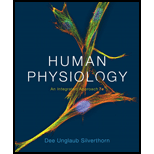
Concept explainers
a.
To determine: The definition and hematological significance of jaundice
Introduction: The liver cells, hepatocytes, assist in the intestinal digestion by producing and secreting about 700-1200 mL of bile juices per day. The bile secretion is alkaline, bitter in taste, and yellowish green colored fluid. It contains bile salts, bilirubin, electrolytes, cholesterol, and water. It is produced by hepatocytes and is secreted into the bile canaliculus.
b.
To determine: The definition and hematological significance of anemia.
Introduction: Hematocrit and the packed red cell volume are used to calculate the red blood cell mass. Hematocrit is the measure of the volume percentage of the red blood cells; it is calculated as a product of mean cell volume and the number of red blood cells. The lesser value of hematocrit or packed red blood cell volume indicates anemia.
c.
To determine: The definition and hematological significance of transferrin.
Introduction: Platelets are the fragments of the megakaryocyte aid in blood clotting. It helps in blood clotting. Platelets are very crucial in the blood clotting, which is required to prevent bleeding and therefore, the patients with blood clotting issues are transferred more blood to replenish platelets and given specific drugs to increase platelet count
d.
To determine: The definition and hematological significance of hemophilia.
Introduction: Haemoglobin is the protein that contains iron. It functions to transport oxygen, haemoglobin is a metalloprotein present in the red blood cells. It carries oxygen from the lungs or gills to the rest of the body.
Want to see the full answer?
Check out a sample textbook solution
Chapter 16 Solutions
Human Physiology: An Integrated Approach (7th Edition)
- please fill in missing parts , thank youarrow_forwardplease draw in the answers, thank youarrow_forwarda. On this first grid, assume that the DNA and RNA templates are read left to right. DNA DNA mRNA codon tRNA anticodon polypeptide _strand strand C с A T G A U G C A TRP b. Now do this AGAIN assuming that the DNA and RNA templates are read right to left. DNA DNA strand strand C mRNA codon tRNA anticodon polypeptide 0 A T G A U G с A TRParrow_forward
- Please identify the curve shown below. What does this curve represent? Please identify A, B, C, D, and E (the orange oval). What is occurring in these regions?arrow_forwardPlease identify the test shown here. 1) What is the test? 2) What does the test indicate? How is it performed? What is CX? 3) Why might the test be performed in a clinical setting? GEN CZ CX CPZ PTZ CACarrow_forwardDetermine how much ATP would a cell produce when using fermentation of a 50 mM glucose solution?arrow_forward
- Determine how much ATP would a cell produce when using aerobic respiration of a 7 mM glucose solution?arrow_forwardDetermine how much ATP would a cell produce when using aerobic respiration to degrade one small protein molecule into 12 molecules of malic acid, how many ATP would that cell make? Malic acid is an intermediate in the Krebs cycle. Assume there is no other carbon source and no acetyl-CoA.arrow_forwardIdentify each of the major endocrine glandsarrow_forward
 Medical Terminology for Health Professions, Spira...Health & NutritionISBN:9781305634350Author:Ann Ehrlich, Carol L. Schroeder, Laura Ehrlich, Katrina A. SchroederPublisher:Cengage Learning
Medical Terminology for Health Professions, Spira...Health & NutritionISBN:9781305634350Author:Ann Ehrlich, Carol L. Schroeder, Laura Ehrlich, Katrina A. SchroederPublisher:Cengage Learning Human Physiology: From Cells to Systems (MindTap ...BiologyISBN:9781285866932Author:Lauralee SherwoodPublisher:Cengage Learning
Human Physiology: From Cells to Systems (MindTap ...BiologyISBN:9781285866932Author:Lauralee SherwoodPublisher:Cengage Learning Human Biology (MindTap Course List)BiologyISBN:9781305112100Author:Cecie Starr, Beverly McMillanPublisher:Cengage Learning
Human Biology (MindTap Course List)BiologyISBN:9781305112100Author:Cecie Starr, Beverly McMillanPublisher:Cengage Learning





